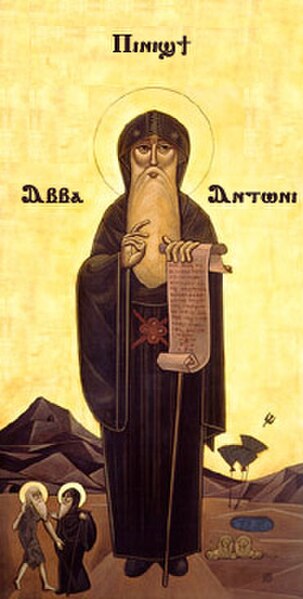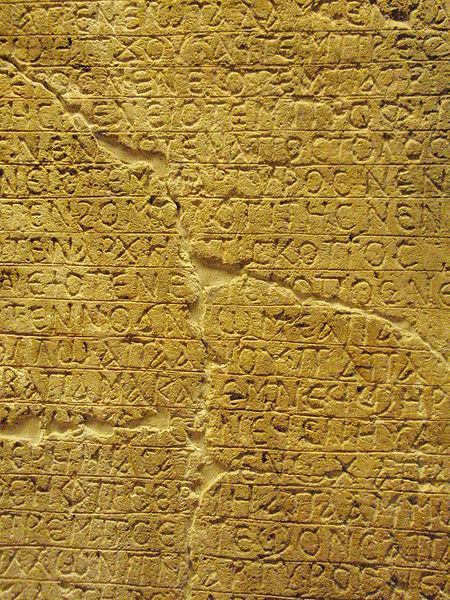Anthony the Great was a Christian monk from Egypt, revered since his death as a saint. He is distinguished from other saints named Anthony, such as Anthony of Padua, by various epithets: Anthony of Egypt, Anthony the Abbot, Anthony of the Desert, Anthony the Anchorite, Anthony the Hermit, and Anthony of Thebes. For his importance among the Desert Fathers and to all later Christian monasticism, he is also known as the Father of All Monks. His feast day is celebrated on 17 January among the Eastern Orthodox and Catholic churches and on Tobi 22 in the Coptic calendar.
Coptic icon of Saint Anthony
Painting of Saint Anthony, a part of The Visitation with Saint Nicholas and Saint Anthony Abbot by Piero di Cosimo, c. 1480
Four tales on Anthony the Great by Vitale da Bologna, c. 1340, at the Pinacoteca Nazionale di Bologna
The Torment of Saint Anthony, copy by the young Michelangelo after an engraving by Martin Schongauer c. 1487 – c. 1489. Oil and tempera on panel. One of many artistic depictions of Saint Anthony's trials in the desert.
Coptic is a group of closely related Egyptian dialects, representing the most recent developments of the Egyptian language, and historically spoken by the Copts, starting from the third century AD in Roman Egypt. Coptic was supplanted by Arabic as the primary spoken language of Egypt following the Arab conquest of Egypt and was slowly replaced over the centuries. Coptic has no native speakers today, although it remains in daily use as the liturgical language of the Coptic Orthodox Church and of the Coptic Catholic Church. Innovations in grammar and phonology and the influx of Greek loanwords distinguish Coptic from earlier periods of the Egyptian language. It is written with the Coptic alphabet, a modified form of the Greek alphabet with several additional letters borrowed from the Demotic Egyptian script.
Fifth–sixth century Coptic liturgic inscription from Upper Egypt.
Papyrus Bodmer VI ("Dialect P") possesses the richest of all Coptic alphabets, with 35 unique graphemes.
Sandstone stela, inscribed with Coptic text. The names Phoibammon and Abraham appear. From Egypt, find spot unknown, date known. The British Museum, London
Coptic and Arabic inscriptions in an Old Cairo church








